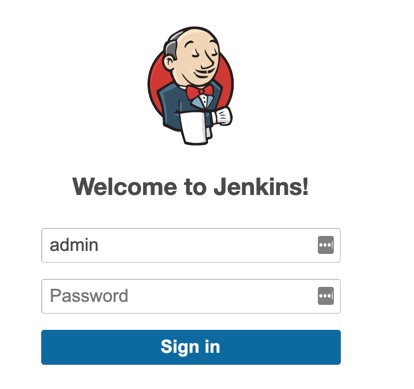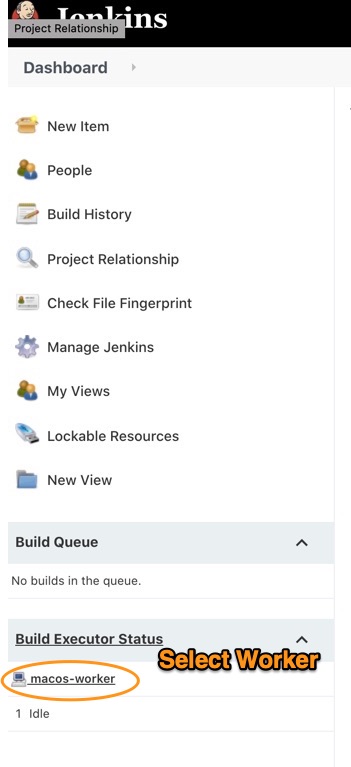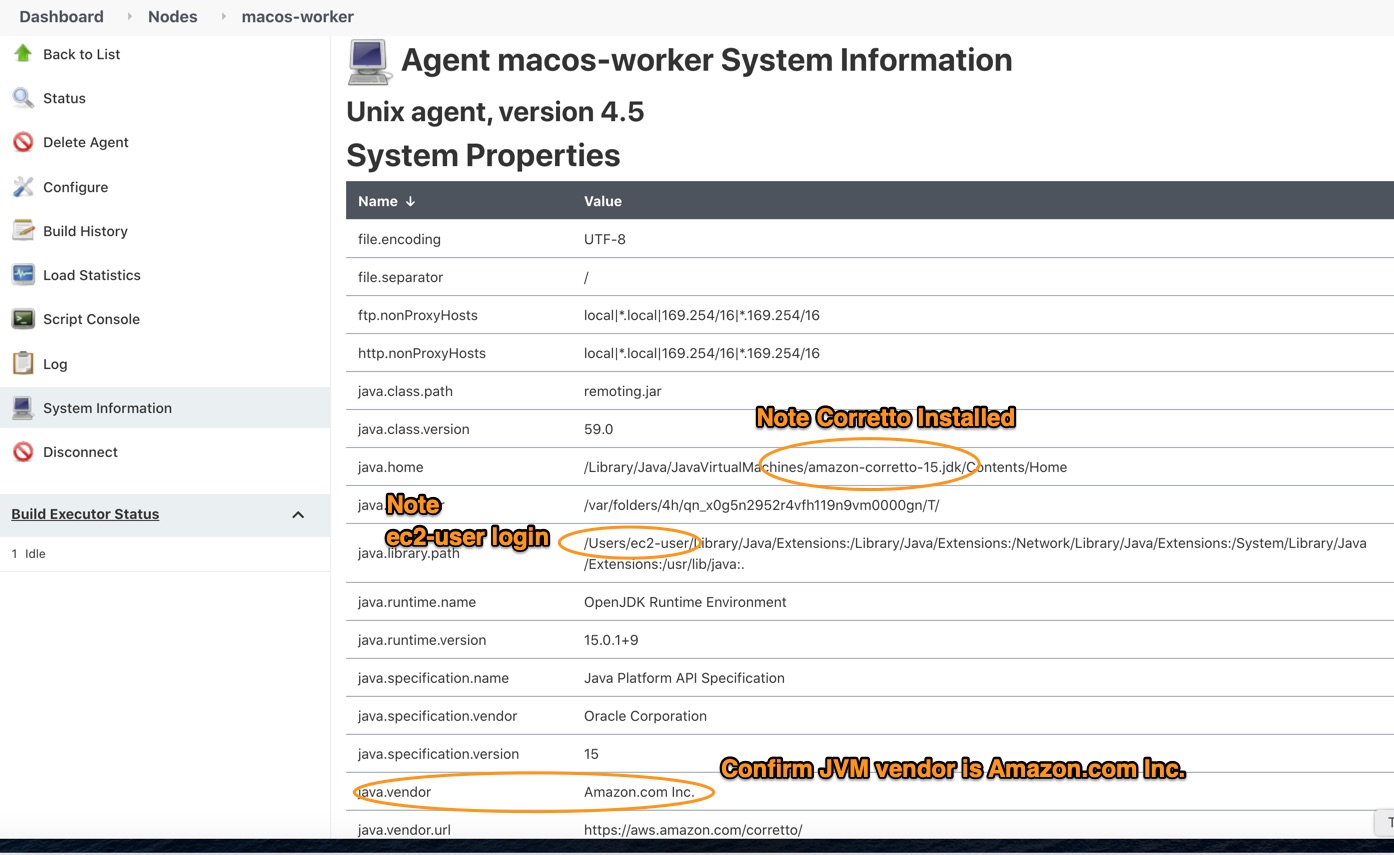This project will build and deploy a new VPC with an EKS cluster, deploy a fault tolerant instance of Jenkins, provision a MacOS EC2 instance, add the instance as a worker to Jenkins, and create an S3 bucket that uses a least privileges security model with access from only the Jenkins’s worker. This project is leveraging the Jenkins Configuration as Code plugin to automate the Jenkins platform.
Getting a stable build environment up and running requires a lot of steps and this approach automates the entire process. Please note that this is an example and should be used as a guide for your site reliability engineering teams to develop their own production deployment. TLS is not enabled with this code but it could be added later to the load balancer.
To deploy this environment, you will need to install aws-cdk and have the AWS CLI installed and configured. Additionally, ensure that you have kubectl installed to work with your EKS cluster.
After ensuring the AWS CLI is installed and configured, you will need to first allocate an ec2 Mac1 host in your region of choice. In the example below we are using us-east-2.
bash$ aws ec2 allocate-hosts --instance-type mac1.metal \
--availability-zone us-east-2a --auto-placement on \
--quantity 1 --region us-east-2
You will need to create an SSH key in the AWS console. Give it a name like “mac-key”
Clone this repo to a directory of your choosing and change into that directory.
(Step by step instructions TBD)
Once you have an allocated host, go ahead and spin up a new Instance.
Connect to the new instance using SSM (steps TBD) and run the script in the file init/init.sh
Once you have successfully ran through all the steps, create a new AMI from the running instance.
Take note of the newly created AMI
Now that you have configured the AWS CLI, AWS CDK, and generated your SSH key you are ready to begin launching the build environment.
First, we’re going to choose the Region we want to launch this environment into by setting an environmental variable for CDK.
bash$ export CDK_DEFAULT_REGION=us-east-2
Install the CDK dependencies.
bash$ npm install
Let’s confirm the stacks that will be deployed.
bash$ cdk list
EKSCluster
JenkinsBucket
JenkinsHelm
JenkinsWorker
Provisioning an EKS cluster takes about 20 minutes so after you run the command below feel free to grab a coffee then come back and check on your deployment.
bash$ cdk deploy EKSCluster
Note the outputs that are generated. Run the commands to get your kubectl environment correctly configured.
From the outputs, you want to run the aws eks update-kubeconfig and aws eks get-token commands to properly setup your kubeconfig.
bash$ cdk deploy JenkinsBucket
It takes about 4-5 minutes for this stack to complete.
bash$ cdk deploy JenkinsHelm
Once this stack is complete run the following commands to login to your Jenkins environment.
Note: If you get an error running this stack just re-run it. There is a known issue with CDK and Helm that is actively being addressed.
Get your Jenkins autogenerated password stored as a Kubernetes secret.
bash$ printf $(kubectl get secret --namespace jenkins cicd-jenkins -o jsonpath="{.data.jenkins-admin-password}" | base64 --decode);echo
Get the URL to your Jenkins installation.
bash$ export JENKINS_ALB=$(kubectl get svc --namespace jenkins cicd-jenkins --template "{{ range (index .status.loadBalancer.ingress 0) }}{{ . }}{{ end }}")
bash$ echo $JENKINS_ALB
Manage Jenkins -> Configure system -> Jenkins URL - set to the JENKINS_ALB value
Configure Clouds -> Kubernetes -> Set URL Jenkins tunnel - remove ci-cd
Login into Jenkins
Open macos-worker
Select "use websockets"
Copy Secret String
bash$ export JENKINS_SECRET="XXXXXXXXXXXXXXXXXXXXXXXXXXXXXXXXXXXXXXXXXXXXX"
Launch the Jenkins CDK stack and note the IP address of the worker.
Modify the lib/ec2-stacks.ts with the newly created Golden AMI in the correct region
bash$ cdk deploy JenkinsWorker
Now that you have captured the admin password from Kubernetes secrets and the load balancer endpoint you can login to Jenkins. Place the URL for the Jenkins install into Chrome or Safari and login.
Once you have logged into Jenkins look to confirm that your MacOS worker is connected.
Confirm details that the MacOS worker is working.
Now that your Jenkins worker has been configured and added you can begin creating Jenkins pipelines or other automated tasks.




